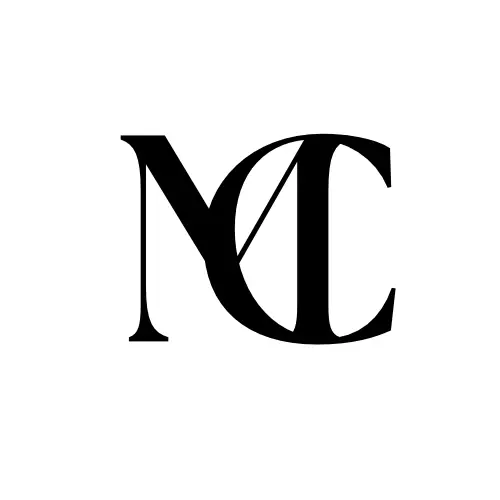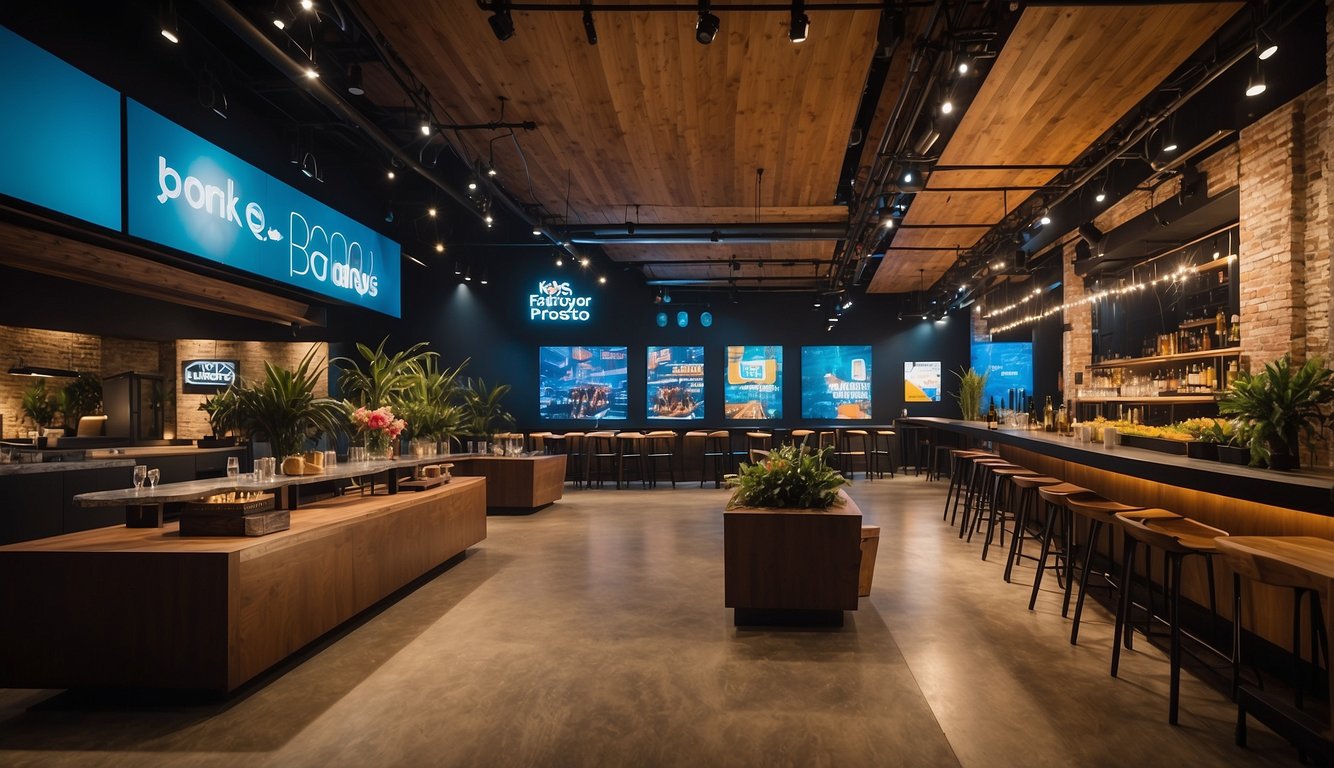I devoted countless hours to research, watched numerous tutorials, and delved into the intricacies of creating event timelines. This comprehensive guide is the result of my efforts, and I’m excited to share it with you.
Navigating the world of timelines can be a puzzle, but I’ll show you how to craft a visual narrative that effectively captures the essence of your story or project. From historical timelines to project milestones, you’ll learn the art of precision in plotting events, ensuring every detail finds its place. Let’s transform abstract time into tangible stories together!
Understanding Timelines
When I first asked myself, “How do I make a timeline of events?” I never realized the precision and clarity it would bring to my projects. Timelines are more than a line with dates; they are the backbone of organizing any period of time effectively, providing context to the sequenced events and helping to track the progress of a project or a presentation.
The Role of Timelines in Event Planning
Event planning without timelines is like navigating without a map; it’s essential to visualize the chronological order of the tasks at hand. By breaking down the entire event into manageable chunks, a timeline ensures that each detail receives the attention it requires within the allocated time slot. Whether I’m coordinating suppliers or juggling multiple deadlines, a timeline keeps the entire project on track.
Timeline Fundamentals
Understanding the fundamentals of making a timeline involves recognizing the value of chronology in organizing information. Each event is a puzzle piece; place it correctly, and the big picture emerges seamlessly. When I consider periods, context becomes my best friend, as it allows me to anchor each event in its rightful place, making the narrative of the project or presentation both clear and engaging for anyone involved.
Pre-Timeline Considerations

When I consider creating a timeline of events, I am excited, as I am promising to create an outstanding experience. It’s not just about chronology—I’m laying the groundwork for milestones that will lead to a successful event. Let’s dive into the crucial first steps!
Identifying Key Milestones
Time stops for no one, and especially not when planning an event. My specific milestones are the backbone of my event timeline. Significant moments, such as securing a venue, finalizing speakers, and marketing launch dates, will shape the entire structure. Getting these etched in stone gives my timeline its skeleton, around which everything else can be fleshed out.
Defining Your Event Goals
Goals are the stars I navigate by; they inform every decision I make. A focused goal, whether it’s raising awareness for a cause or networking with peers, will directly influence the flow and details of my event planning timeline. I outline what I hope to achieve and let these aspirations drive the scheduling, resource allocation, and benchmarks for success.
Creating Your Timeline

When I first asked myself “how do I make a timeline of events,” I discovered it’s all about painting a picture of history while keeping an eye on the future. Let me walk you through creating a dynamic and effective timeline.
Selecting the Right Timeline Template
My quest began with choosing a template that fit the narrative I wanted to share. A variety of timeline templates are available, but I found that a SmartArt design tab in Microsoft Office provided diverse styles that could be tailored to any series of events. The right template acts as a skeleton, ready to be fleshed out with my story’s pivotal moments.
Customizing Timeline Details
With my template in hand, I focused on customization. Color schemes and fonts aren’t just about aesthetics—they convey the mood and importance of what’s unfolded. Paying careful attention to these details ensures my timeline speaks clearly and captures the essence of the events in both style and substance.
Incorporating Relevant Dates
A timeline is nothing without dates; they are the backbone. I needed to dig deep into research, ensuring every date I included was accurate and significant. This part was all about distinguishing the critical milestones from the trivial–highlighting turning points that propelled my story forward.
Establishing Clear Deadlines
Finally, I set clear deadlines for each phase of my timeline creation. Deadlines kept me on track, ensuring my event timeline was thorough and completed in a timely manner. It’s all about balancing the weight of history with the urgency of the present.
Creating an impactful timeline begins with thoughtful planning, extends through meticulous customization, and ends with the strategic imposition of deadlines to bring everything into focus. The journey from a simple question to a rich, detailed timeline has been an exhilarating ride.
Event-Specific Elements
Crafting a timeline for an event can really energize your planning process. It’s like laying out a roadmap where each signpost points to key event-specific elements. I love seeing my event come to life as I consider the unique aspects that will make it memorable. Here’s how I tackle each critical piece.
Venue and Logistics
Choosing the venue is a monumental step as it sets the stage for your entire event. I always lock this in first for my timeline because logistics like parking, accessibility, and layout vastly influence the guest experience. Make sure to detail key logistics well ahead of time; things like:
- Site inspection dates
- Safety and accessibility arrangements
- Registration area setup
Catering and Food
There’s no denying it – food is a highlight! My advice is to get your catering booked early. Whether it’s a five-star plated service or trendy food trucks, identify dietary requirements and finalize the menu to avoid last-minute hitches. Remember:
- Tasting and menu selection dates
- Deadlines for dietary accommodation
Vendors and Contracts
I always try to get my vendors and contracts sorted out quickly to avoid any hiccups. This includes your florist, DJ or band, and decorations. Establish clear timelines for contract reviews and final decisions, such as:
- Submission of vendor proposals
- Contract signing dates
Entertainment and Activities
To set your event apart, the entertainment and activities you choose can make a world of difference. Whether I have a local band or a keynote speaker, securing talent early is key. Keeping guests engaged also means planning:
- Auditions or selection of performers
- Scheduling of activities and breaks
Adding Visual Appeal

When I think about how to create a timeline of events that captivates and informs, I turn to visual appeal. It’s not just about dates and facts; it’s about creating an experience that pops off the screen or page.
Choosing Color Schemes and Styles
Colors and shapes play a pivotal role in how your timeline is received. I recommend picking a color scheme that reflects the mood or era of your timeline. For instance, a PowerPoint presentation on the Renaissance might use rich, warm hues. Be mindful of contrast to ensure readability. Styles aren’t just for show; they guide the viewer’s eye. A SmartArt graphic in Visio can organize information with both finesse and clarity, offering a gallery of layouts to suit your subject.
Incorporating Illustrations and Photos
Illustrations and photos are not just embellishments; they are storytelling tools. Tailor your visuals to the event, like using period-accurate illustrations for a historical timeline. With PowerPoint, inserting images is a snap, and the right photos can convey a wealth of information without a single word. Look for the balance between aesthetics and information—your timeline is a visual narrative just as much as a record of events.
Timeline Tools and Software
As someone keen on organizing events chronologically, I’ve discovered that mastering timeline creation improves clarity and enhances project management. Whether you’re plotting history for a school project or visualizing project milestones, you need the right tools. Here’s a quick take on making timelines easy and professional with dedicated software.
Using Microsoft Office Timeline Features
Microsoft Office offers an array of timeline tools, such as PowerPoint and Word, that are built into its applications. In PowerPoint, inserting a timeline is a breeze with SmartArt graphics. After hitting the ‘Insert’ tab, you just select ‘SmartArt’ to access a variety of process-related graphics or opt for the Basic timeline or Circle Accent Timeline layouts.
For those of us who love to power through, the Office Timeline PowerPoint add-in ramps up the capabilities. With a free trial of Office Timeline Pro+, creating stunning, automated timelines becomes almost magical. I just have to pour my data into the text pane and watch the software turn it into a polished visual.
Exploring Professional Timeline Software
When the tools in Office don’t quite cut it, or I crave more sophistication, professional timeline software steps in to fill the gap. Office Timeline offers powerful tools that integrate with project management software. For users wanting a more flexible and customizable approach, platforms like Visme provide templates to create timelines that truly stand out.
Moreover, there’s an array of dedicated tools out there – like the one from Asana – that allow teams to build shared timelines easily. It’s a whole new world where timelines tell a story and keep entire teams aligned and on track.
The Event Planning Team

When diving into the process of figuring out how do I make a timeline of events, it becomes clear that the success is rooted in the team’s synergy. As an event planner, I know that a structured team forms the backbone of a seamless event.
Assigning Roles and Responsibilities
I begin by pinpointing various roles and responsibilities for my event planners, ensuring everyone knows their specific duties. A comprehensive table is indispensable:
| Role | Responsibilities | Member |
|---|---|---|
| Project Lead | Overall event oversight and decision-making | Myself |
| Logistics Coordinator | Venue and transport arrangements | John Doe |
| Vendor Manager | Liaising with caterers and decorators | Jane Smith |
| Communications Head | Coordinating public relations and media | Alex Green |
| Volunteer Supervisor | Assigning tasks to event staff | Michelle Orange |
Each role is pivotal, and by itemizing them, I solidify our timeline’s foundation.
Communication and Team Coordination
My team’s effectiveness hinges on transparent communication and coordination. We harness a variety of tools for this:
- Slack for day-to-day communication.
- Trello for tracking tasks and deadlines.
- Weekly Zoom calls to align all stakeholders and partners.
Maintaining regular, clear, and open dialogue ensures that professionals and event staff are always on the same page, propelling us further along our meticulously crafted event timeline.
Final Steps Before the Event

As the event approaches, how do I make a timeline of events that ensures everything runs smoothly? It’s all about the details now, and I’m here to walk you through the final, crucial checks.
Reviewing the Timeline with Stakeholders
The final countdown has begun, and it’s imperative that I sit down with the stakeholders to review the event timeline. Ensuring that everyone is on the same page is critical. During this meeting, I’ll highlight key components such as the arrival of the keynote speaker and confirm that all involved parties are aware of their responsibilities. Additionally, it’s an opportune moment to reassess the timeline and make any necessary adjustments.
Allocating Buffer Time for Unexpected Issues
No matter how meticulously I plan, I must incorporate wiggle room for those last-minute surprises. By setting aside buffer time within the timeline, I prepare for the unexpected—be it a technical hiccup or a delayed guest speaker. Having this emergency plan with extra time earmarked ensures that these unforeseen issues don’t throw off the entire schedule. It’s all about expecting the best but planning for the worst.
Day-Of Event Management
When the day finally arrives, I know the crux of event success lies in efficient day-of management. A solid, well-crafted timeline becomes my go-to guide, ensuring I cover all crucial junctures of my event, from promotion to the last-minute snack distribution to the attendees.
Implementing the Day-of Timeline
I start my morning by reviewing the detailed day-of timeline I’ve created, which outlines every task in sequence. First, I double-check the key times for vendor arrivals, setup completions, and event promotion kick-off. I then synchronize watches with my team to ensure we’re all ticking in unison. Promotion efforts, like last-minute social media blasts, are crucial now to remind my target audience and cause a final surge in attendance.
Monitoring Progress and Making Adjustments
Throughout the event, I stay alert and ready to pivot. I monitor the unfolding of the timeline, actively checking off milestones and staying in communication with the team. If a speaker is running over time or if the snack refills are dwindling faster than expected, I make swift adjustments on the spot. It’s a balancing act of staying true to the timeline and being adaptable, always keeping the satisfaction and engagement of my attendees in mind.
Post-Event Assessment
As I sit down to review the details, I’m electrified by the historical footprints my event has left. Mastering the art of reflection is key in the ancient craft of event planning. Thriving on yesterday’s lessons, I can’t help but think, “How do I make a timeline of events that resonates through history?”
Analyzing Event Success
Immediately after the curtains fall, it’s essential to trace the trajectory of the event’s success. I meticulously scrutinize every element against my event planning timeline. Did the milestones align with project management objectives? Were there pivotal moments that captured the essence of the successful event for posterity? Chronicling important events through pictures and quantitative data breathes life into history, offering a vivid snapshot for my organization.
Gathering Feedback for Future Planning
Next, I dive into the ocean of feedback. I gather insights from every corner: attendees, stakeholders, and staff. What soared? What stumbled? Each piece of feedback is a precious gem that I embed into the future planning mosaic. My timeline of events is no mere list of dates; it’s a treasury of experiences, a crucible where every historical event is distilled down to inform and enhance future projects.
Our Opinion

When I ponder how do I make a timeline of events, there’s an undeniable thrill in mapping out a path through history or future projects. Crafting a timeline isn’t just about plotting dates; it’s an art form that gives structure to your stories and plans, transforming them into a clear, visual journey. Here’s how I see it:
Organization is paramount—you can’t build a house without a blueprint, and similarly, constructing a timeline requires a clear plan. Starting with the basics, I always ensure that I understand the scope of the timeline. The key milestones stand out as beacons, ensuring that significant points don’t get lost in the shuffle.
- Research is your foundation. I take the time to sift through information methodically, ensuring each fact is poised to take its rightful place on the timeline.
- Visual Appeal matters! Why not add a splash of color or icons? Aesthetics can make or break the absorption of information.
Finally, tools are the silent heroes in timeline creation. The software options mentioned in Creating a Timeline with Your Usual Tools have been game-changers for me. I cherry-pick elements from different templates or sometimes just build my own from scratch!
Smiling, I often step back to admire the cascade of dates and events, a testament to the story I’ve just illustrated. It’s a timeline, yes, but it’s also a piece of me—a crafted narrative waiting eagerly to be shared and understood.
FAQ- How Do I Make a Timeline of Events
What is a timeline of events?
A timeline of events is a graphical representation that lays out a sequence of events in the order they occurred. It is typically linear and can be horizontal or vertical, showing dates, milestones, or key moments along a line.
Why create a timeline?
Timelines help to visualize the chronological sequence of events, making it easier to understand the relationships and durations between them. They are useful for project planning, historical education, storytelling, or organizing any information that spans over time.
How do I organize the events on a timeline?
Organize events chronologically from left to right or top to bottom. If your timeline covers a long period or includes many events, consider using breakpoints or sections to divide it into manageable parts (e.g., decades, phases of a project, or significant epochs).
If you enjoyed reading about How Do I Make a Timeline of Events, check out our other articles:
- Event Planning 101: Mastering the Basics for Memorable Events 2024
- Business Event Organization Tips 2024: A Strong Guide for Success
- Fun Date Ideas 2024: Creative Ways to Spice Up Your Outing
- Bachelor Party Events 2024: Unforgettable Ideas For A Great Celebration
Feel free to also check out our other Articles from the category “Business Events“ and don’t forget to follow us on Pinterest.







